
Fears of Transmission in May Ring True in June
As reported exclusively in Defense One.
After COVID-19 prompted nationwide shut-downs in March, reopening presents a challenge for employers working to prioritize both organizational mission and the health of their employees and clients. As the nation’s largest employer, the government contends with an increasingly politicized pandemic, security hurdles made difficult by remote work, and a nation in need of critical services.
To capture the challenges of working for the government during this unprecedented time, Government Business Council (GBC) polled over 600 Defense One readers between May 8-14. Respondents were largely anxious about the virus, with 88% expressing concern about catching COVID-19 and 80% worried about spreading COVID-19 to family members.
Respondents took this survey as cases were steadily decreasing in the United States, yet still between 20,000-25,000 new daily cases. Unfortunately, nearly 6 weeks later, fears about reopening have been validated, as outbreaks in many states cause national daily averages to skyrocket towards 40,000 per day.
80% of respondents worry about spreading COVID-19 to family members when they go back to work, as they may be a vector for virus transmission.

88% expressed some degree of concern about contracting COVID-19 in the coming months. Almost half of respondents said they did not feel safe reporting to their normal workstation. Only 34% said they felt safe returning to work, and 18% said they weren’t sure.

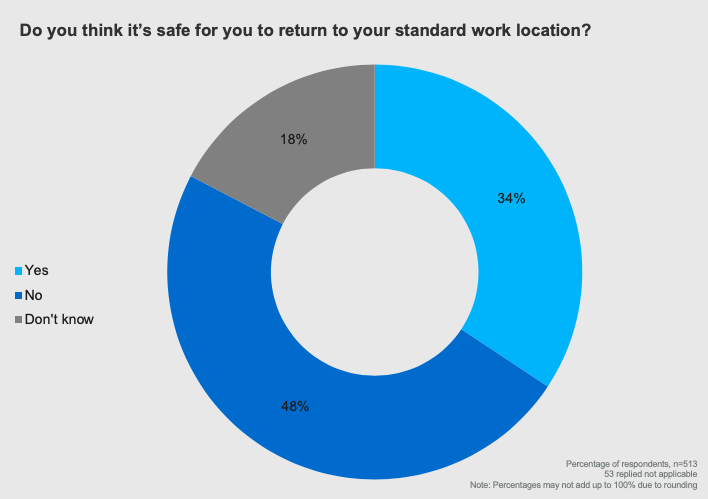
When asked their thoughts about states opening up, 36% said it was happening at the right time. 41% thought their states were opening too early, and 18% said their state was not opening soon enough. These respondents were sampled from a large Defense One readership spanning many states.
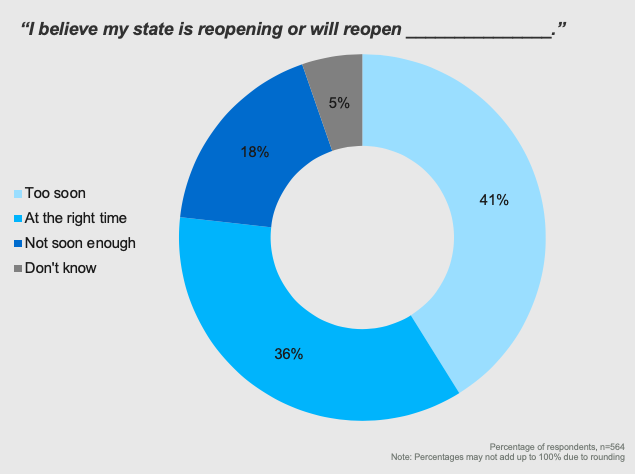
The number one concern among participants, cited by 57% of respondents, was the health of a family member. The next three most common concerns reflected personal safety issues and the mitigation of viral transmission: access to testing, physical health, and inadequate protective equipment. More than one in three worried about financial insecurity.

76% of government employees report moderate to extreme impacts to operations, but many were hesitant to return to work, citing uncertainty about PPE and testing capabilities.
Federal employees, state and local government workers, and military respondents were asked questions about their organization’s response. 76% report at least moderate impact to their day-to-day work.
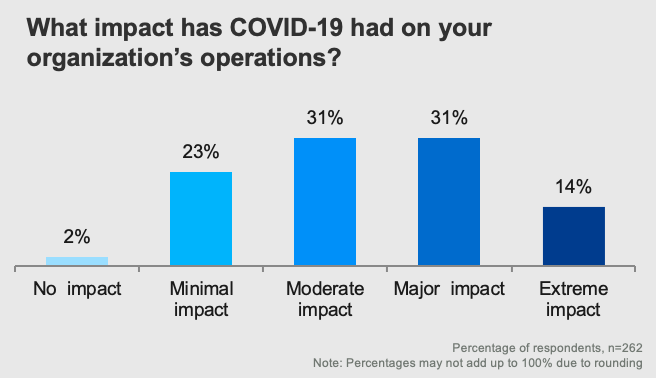
One in five government workers were still expected to report to their typical workstation. Another 20% still went to their office, but with less frequency, presumably on a rotational basis with other employees to limit the number of people in the space. Just three in five shifted to remote work.
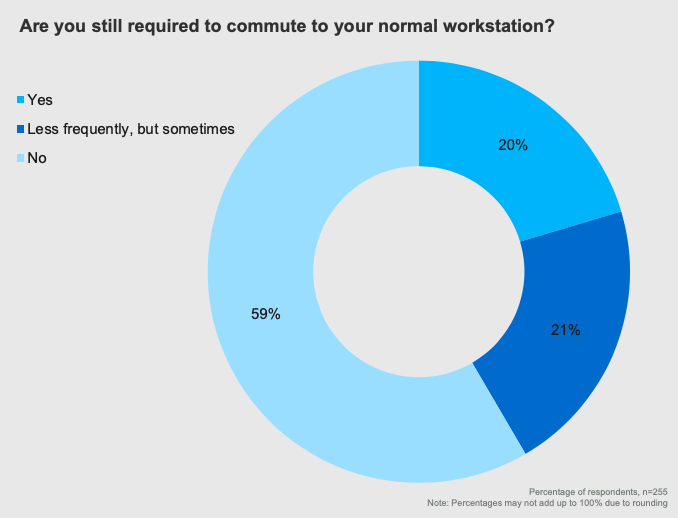
Government respondents who reported working from home or reported going to the office less frequently were asked about their organization’s reopening plans. 50% said they were not at all or only slightly confident that their organization would supply adequate PPE.
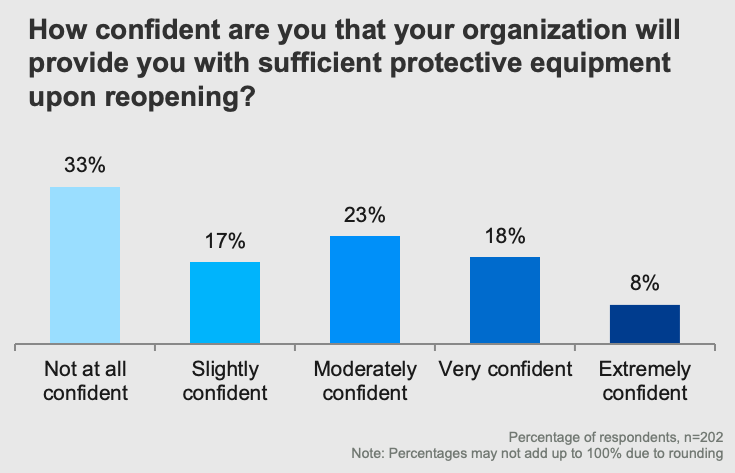
The group who said they still report to the office were asked about their satisfaction with their organization’s efforts to keep employees protected from the virus. 64% expressed moderate to extreme satisfaction. One in five were not at all satisfied with their organization’s protection efforts.
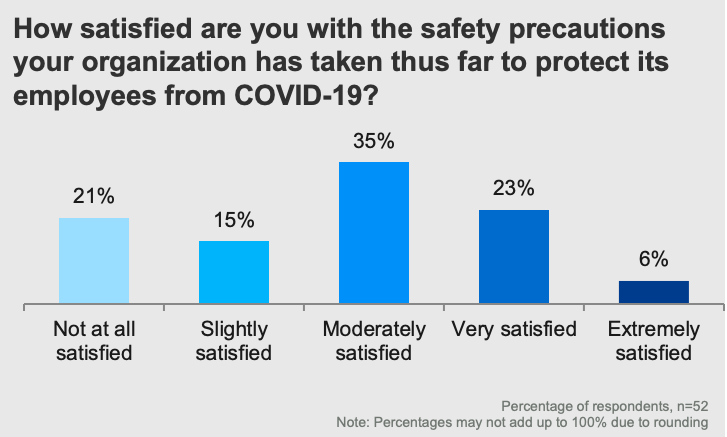
While employees were generally content with the Department of Defense’s (DoD) response, respondents did not applaud individual leaders with the same satisfaction.
The response of the DoD itself was viewed positively by those in the government and related industries, with 50% approving and only 18% disapproving. President Trump was largely criticized, with 61% disapproval by the overall audience, most of whom strongly disapproved of his response to the pandemic. Secretary of Defense Mark Esper received equivocal marks, with 31% disapproving, 34% approving, and 35% neutral.

The audience returned lukewarm responses on the helpfulness of the Pentagon’s COVID-19 guidance. The majority of participants said the Pentagon’s guidance was moderately helpful. One in five respondents said that it was very helpful; the same proportion called it slightly helpful.
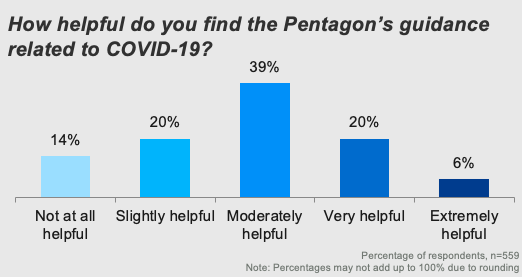
When asked about President Trump’s handling of the pandemic, 49% responded that it made them feel much less safe. At the same time, 26% said his response made them feel safer.
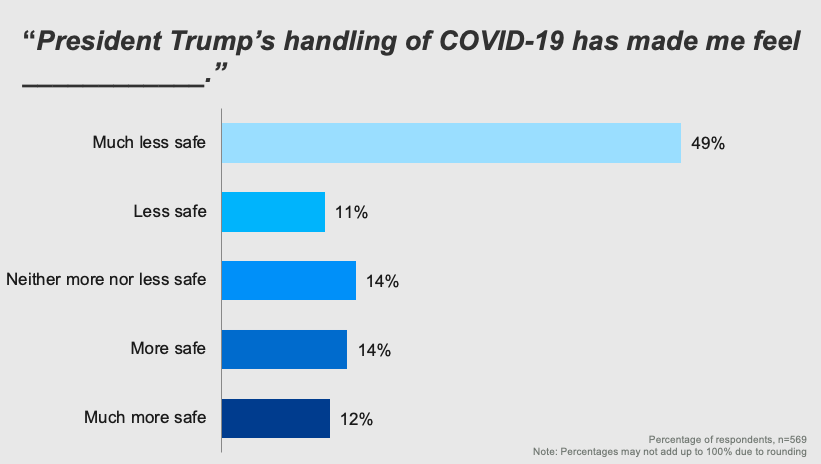
This post is written by Government Business Council; it is not written by and does not necessarily reflect the views of Government Executive Media Group's editorial staff. For more information, see our advertising guidelines.